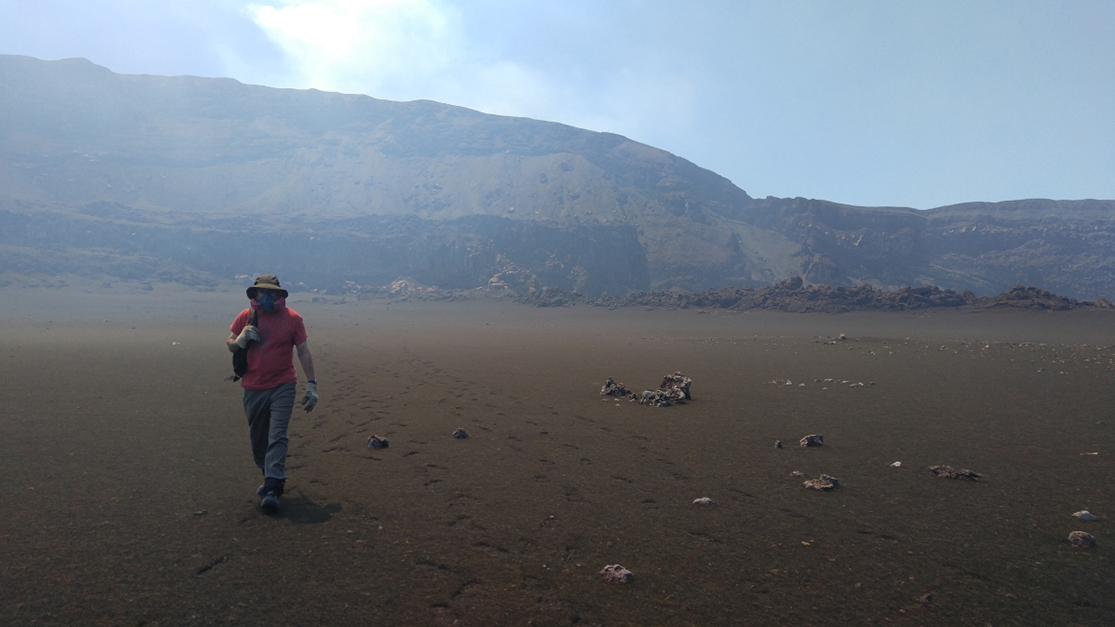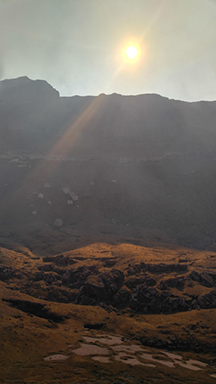.
From Volunteer to Ph.D. and Back Again!
By R.J. Corgan, Earthwatch Volunteer
.

R.J. walks on a lava lake near the Masaya Volcano.
.
As Earthwatch volunteers, we are fortunate to experience life-changing adventures, but we rarely get to see what goes on behind the scenes or truly understand the true impact of our work.
Fifteen years ago, I took my first Earthwatch trip to Iceland as a volunteer. I got to see puffins, glaciers, floods, and volcanic eruptions—and was amazed. After the trip, I stayed in touch with the scientists and, a few years later, was invited to pursue my Ph.D. at their university. Completing my dissertation required mapping a massive area in front of a glacier. It was an impossible task for one person, so we enlisted the help of Earthwatch volunteers. This time, however, I helped lead the volunteer teams. I can honestly say, I would not have been able to obtain my Ph.D. without their help.
It was through this experience that I learned that the stories we collect as volunteers are amazing, but they’re only the tip of the iceberg. Scientists leading Earthwatch teams sometimes go out to the field months beforehand, setting up equipment and collecting data before we arrive. While volunteer teams may rotate in and out every week, sometimes for months, the scientists remain throughout.
.

R.J. in Iceland.

R.J. in Iceland.
.
Often they are often doing a mad balancing act in the most remote regions of the world. Putting aside the fact that they have to acquire additional funding, equipment, manage the logistics for travel, food, and gear for all of their team members, they also have to ensure the safety of every member (ranging in ages from 16 to 60+) often under hazardous conditions. They do this while simultaneously educating students, managing course loads, and enlisting the help of local populations. Sometimes, they’re even treating wounds, hypothermia, and making sure we get out in one piece (and stay sane!).

At some point, they even manage to collect the data. Late at night, they are locked away in tents, cleaning, processing, and analyzing the data. They do all this while being separated from their families and children for long periods, year after year.
When we join an expedition, we glimpse only a small chapter of their lives and of the data the story tells. The full tale is built year after year, as the data fill in the gaps, painting a picture that helps us better understand our world.
These days, I sit in an office and no longer work out in the field. To get outside and get my hands dirty again, I’ve begun to take trips with Earthwatch again, most recently to help map ground deformation, gravity measurements, and sulfur dioxide measurements on the expedition Exploring an Active Volcano in Nicaragua. It was a fantastic trip.
Inspired by my first expedition to Iceland, I wrote a science-based mystery novel, “Cold Flood,” to let readers share these experiences. While the characters and events in the book are entirely fictional, the science is real. Further books, including “Meerkat Murders” and “Mammoth Drop,” are on their way in 2019, and I hope they provide the reader with a deeper understanding of what goes on behind the scenes on an expedition. These books are written as a tribute to all the Earthwatch investigators that collect data, keep us safe, and forever change our lives.
Sign up for the Earthwatch Newsletter
Be the first to know about new expeditions, stories from the field, and exciting Earthwatch news.